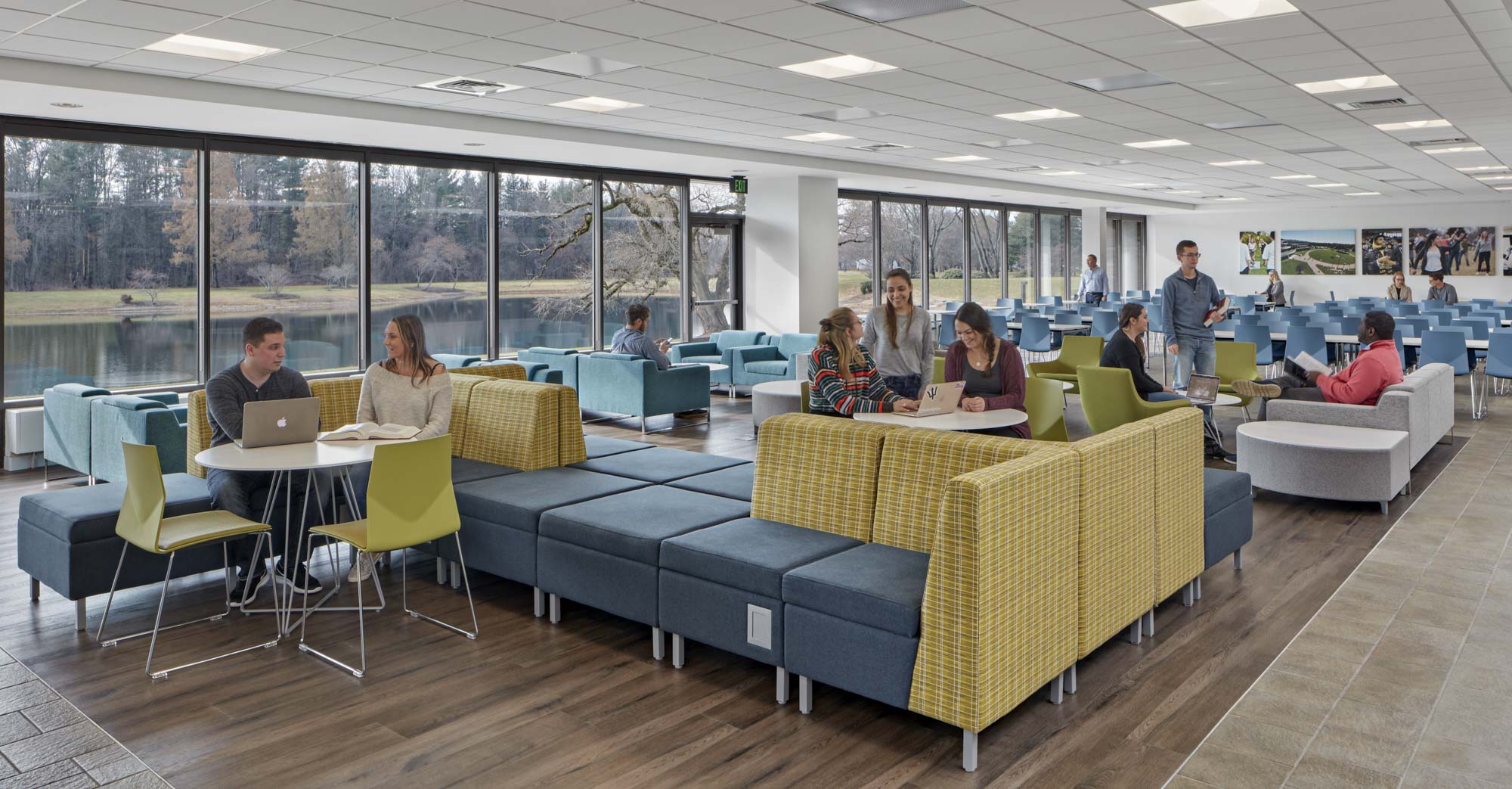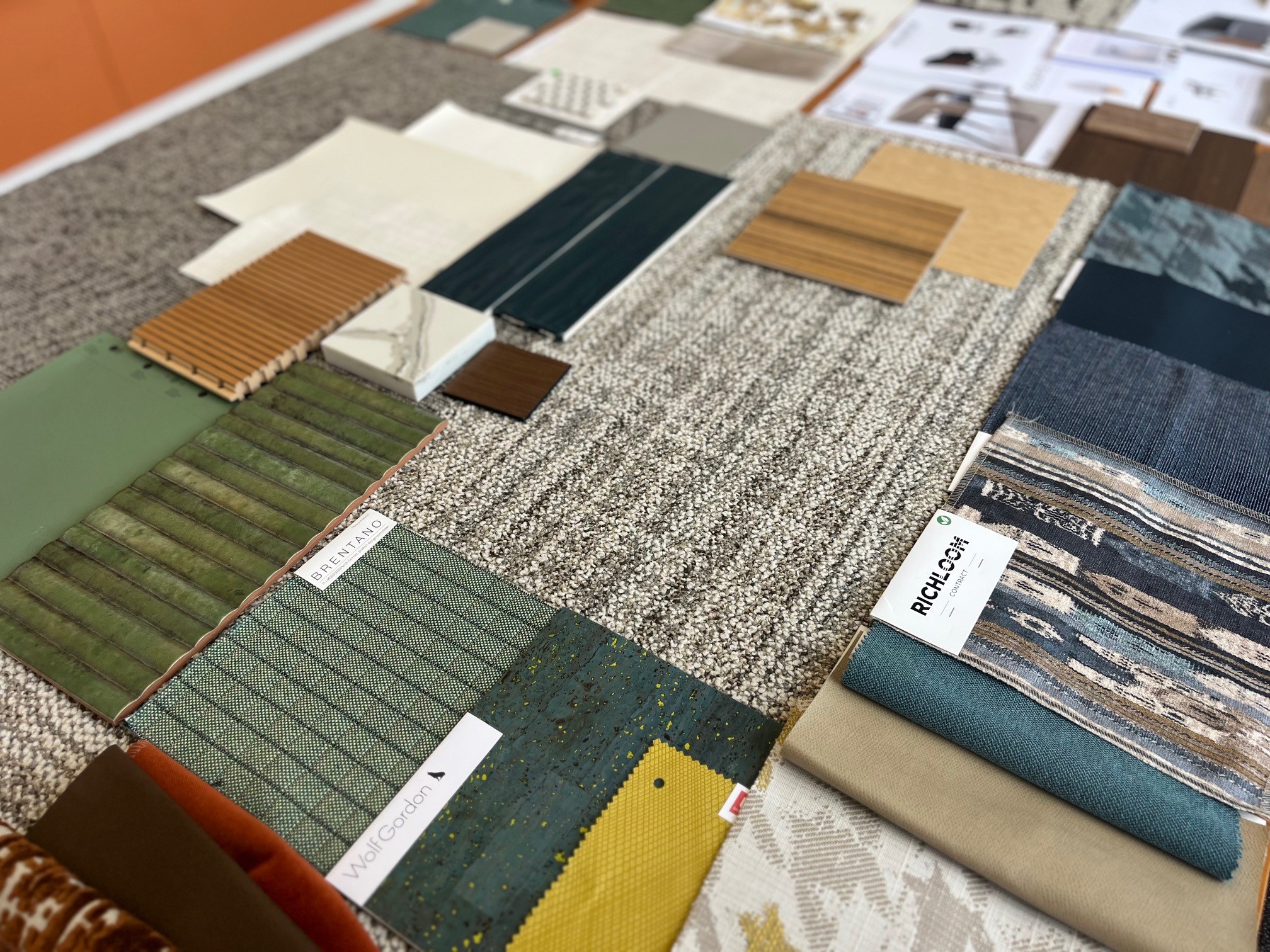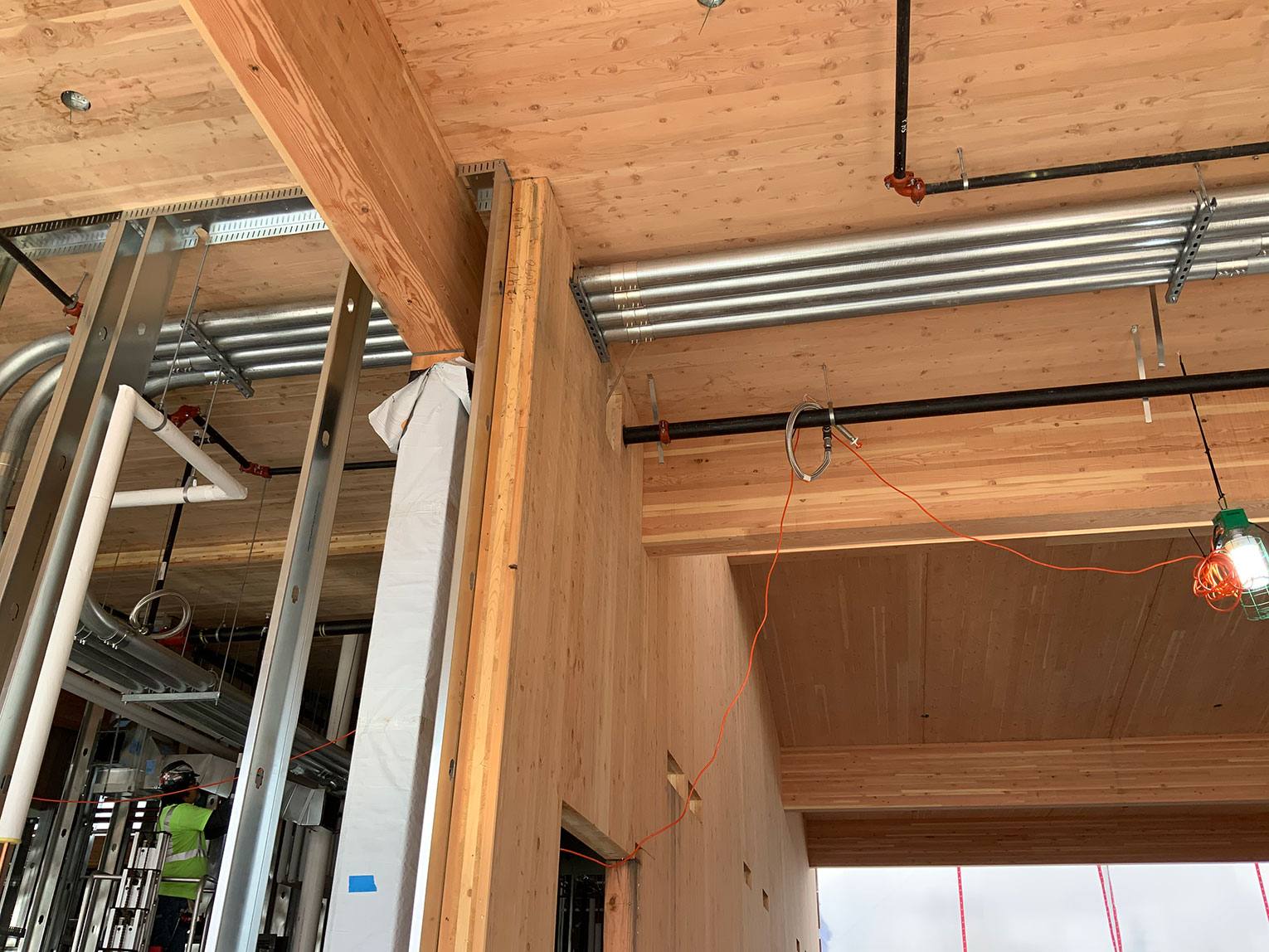An image of one of Amenta Emma’s senior living projects was included in a recent Architectural Digest article about how the coronavirus pandemic could affect architecture and design.
As head of our firm’s Senior Living studio, this is something that has been on my mind. Seniors are one of the populations most at risk with COVID-19, so we may see significant changes in senior living design as a result of the pandemic. Just last week, a senior living client requested we add negative pressure rooms—which hospitals use to prevent the spread of airborne pathogens—to their design.
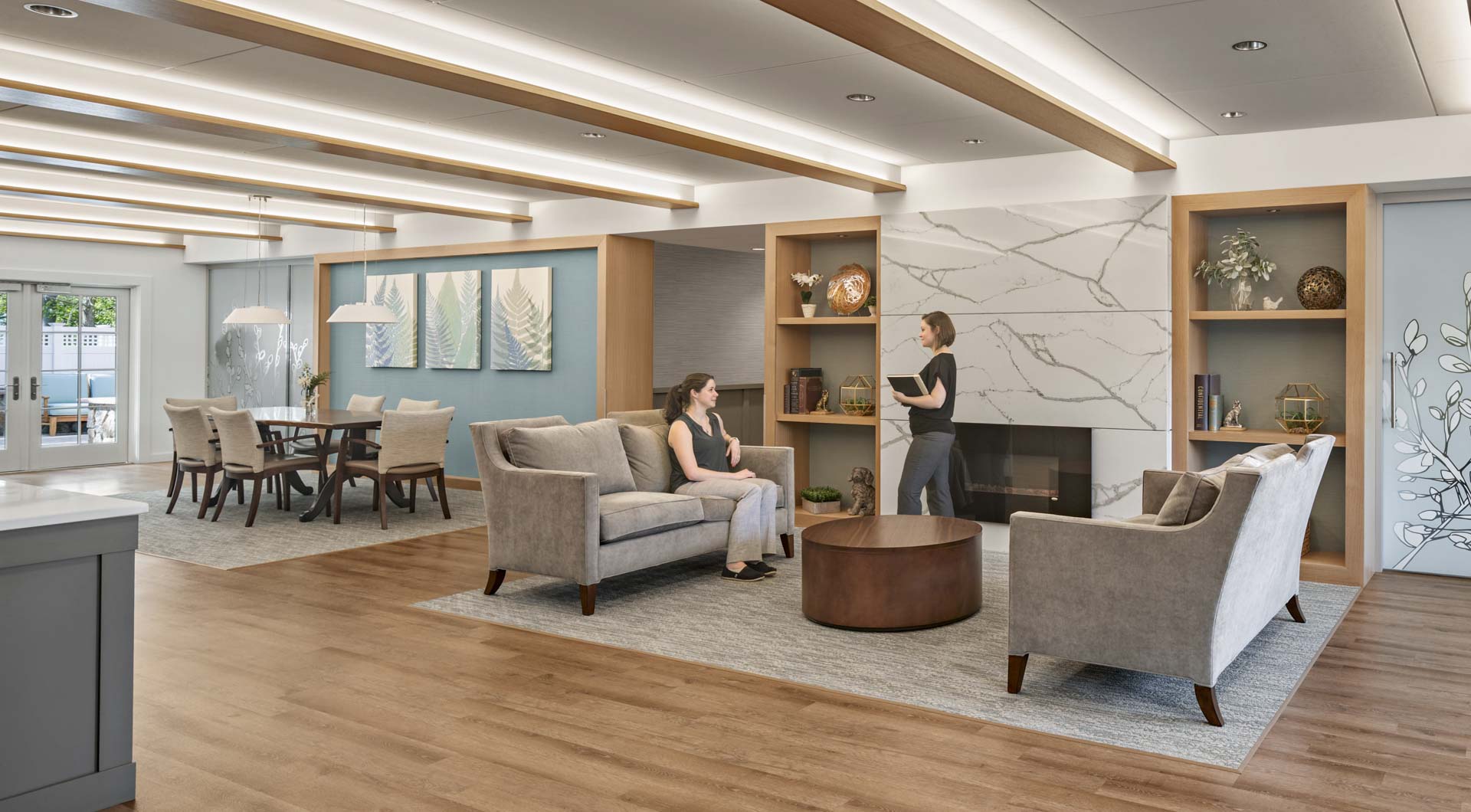
We may see significant changes in senior living design as a result of the pandemic.
COVID-19 may also accelerate the transition to hands-free technology in senior living settings. It will be more than hand dryers and faucets—we’re likely to see hands-free door technology improve and become the norm throughout the building, not just for handicapped access. Hands-free light switches and voice activation for controlling temperature, and window treatments will become mainstream, and with more restrictions on visitation, video calling devices such as the Amazon Echo Show may increase in popularity as well. The coronavirus outbreak may also affect building and mechanical codes to call for more advanced air and filtration systems in senior living projects.
I decided to pose this question to colleagues in other Amenta Emma studios to get their take on how the built environment may change once the crisis subsides.
Education – While the students are away, will the builders play?
Educational institutions always face the challenge of either building in the summer or building when students are on campus. With classes canceled or moved online, could the pandemic present a chance to complete projects more rapidly? From Michael Tyre and Bob Swain:
The impact of COVID-19 is hitting the academic world in a multitude of ways. Beyond disruption of the actual school year (be it K-12 or higher education), it has suddenly shifted on-line academic delivery to serving as the norm for students across the U.S. and has forced institutions to embrace the opportunities and challenges associated with it. It reinforces the need for everyone to both embrace technology, be set up for it, and successfully trained to effectively use it.
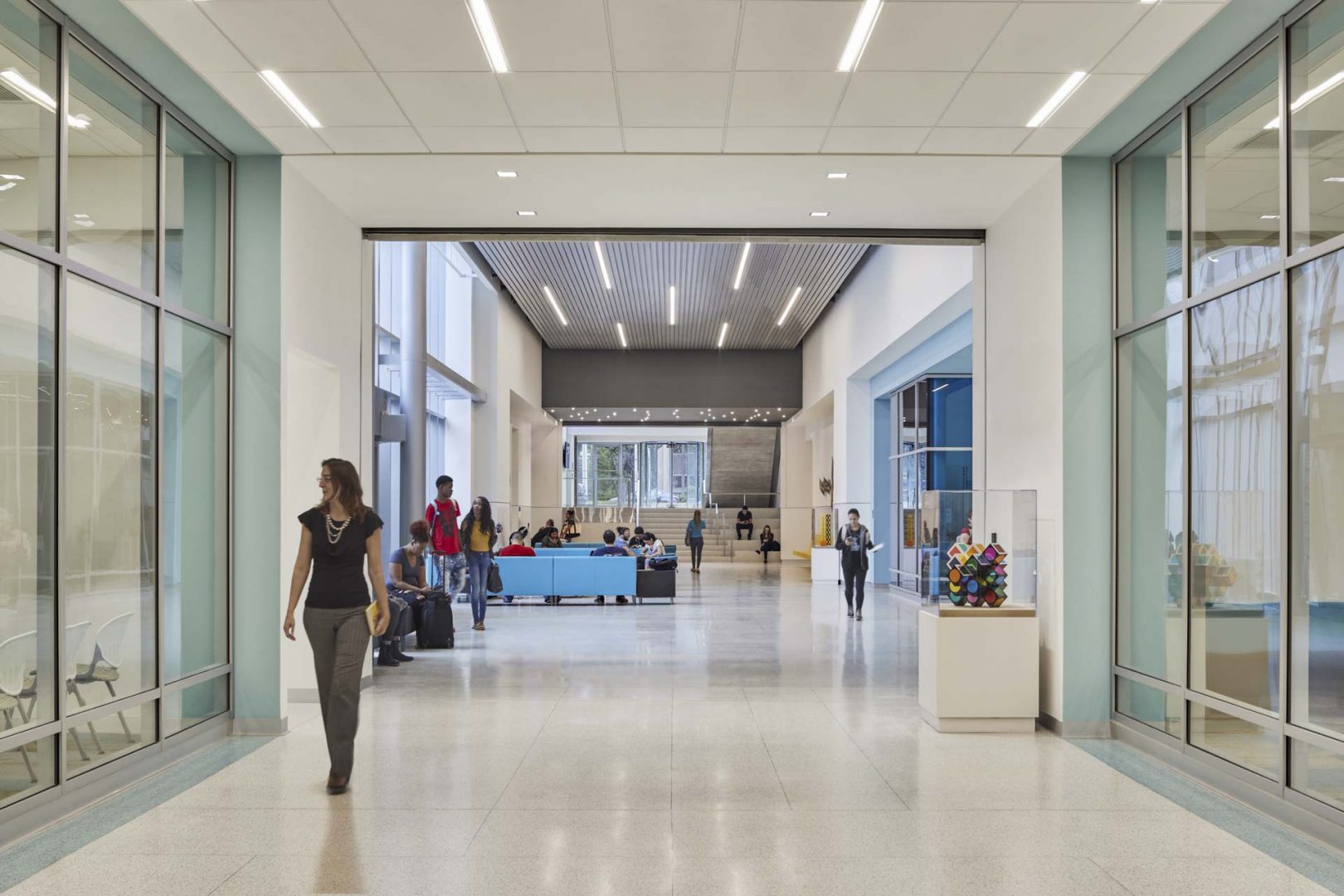
In the short term, colleges and universities are evaluating the uncertainty of starting up planned projects that may be seriously impacted by the economic effect of the pandemic while also pushing forward projects already in construction that may see issues with contractor staffing or supply chain delays. The flexibility caused by the lack of students on campus or renovation projects that were underway in occupied buildings, does present the ability to push projects forward without managing the complexity of typical on-campus activity.
Retail – Accelerating the inevitable
Tony Amenta was recently on Good Morning Connecticut to discuss the future of retail. His take on the coronavirus pandemic is that may cause a transition to mixed-use that is already underway in retail to move along more quickly.
Small retail business, and some larger ones won’t survive, opening more vacancies. That’s a good thing for the future because when order is restored, the same problems pre-coronavirus will re-appear. In Boston, those are traffic and the high cost of urban living. Well-placed centers with large vacancies should be planning now for the mixed-use community of the future-where you can live, work, eat and play without needing a car. The vacancies will allow more opportunity (more buildable area) to bring in the housing and the office component in a neighborhood setting.
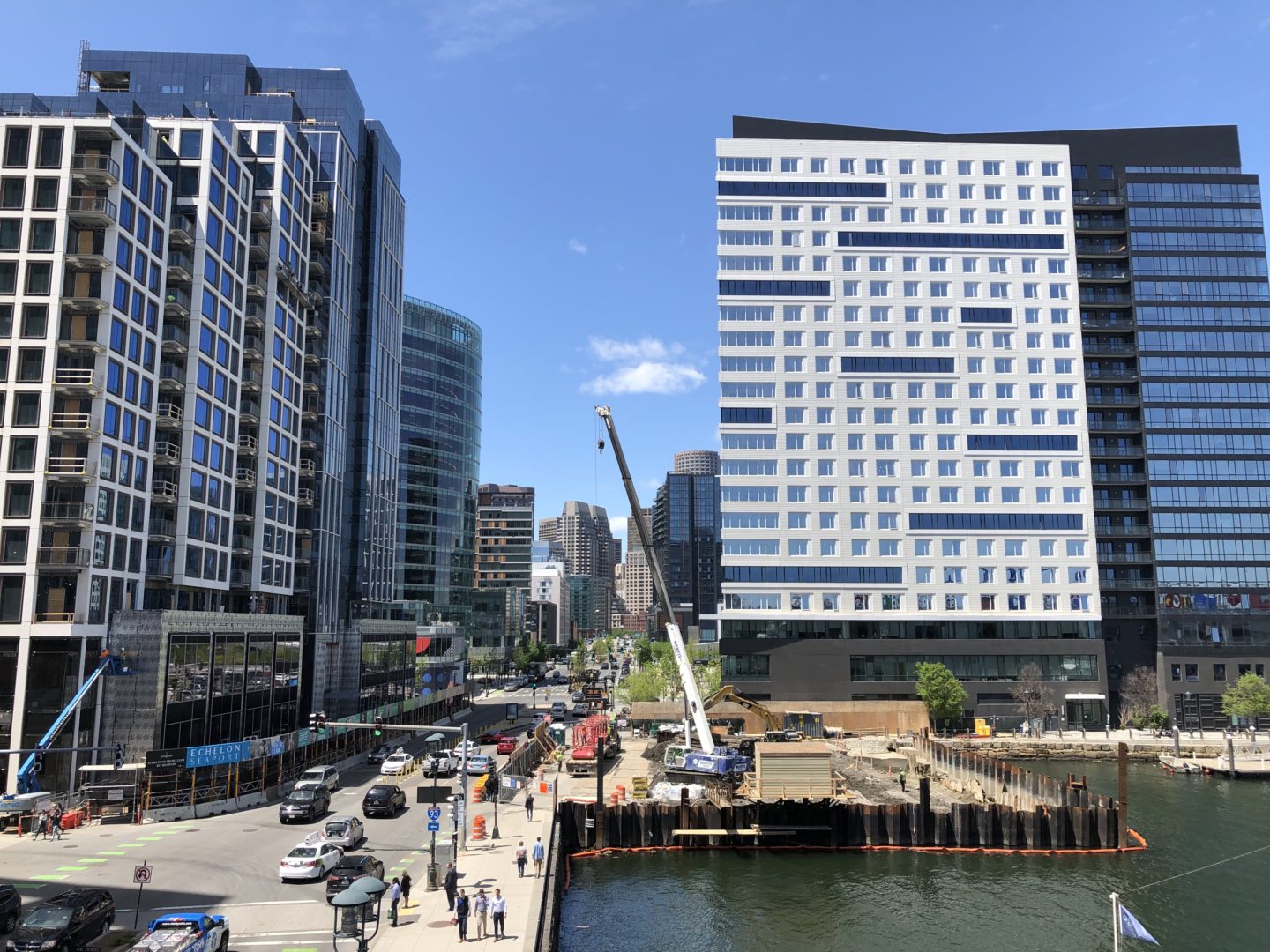
Vacancies may allow for planning to address traffic and the high cost of urban living in Boston.
Workplace – Working together (but maybe slightly more apart)
In the workplace, it seems likely there will be an exploration of designing between what we’ve considered normal working proximity and working remotely. From Debra Seay:
We’re hearing a lot about employees working from home, but there can be options between normal office function and working remotely. I anticipate greater interest in library-style areas in the workplace with long tables where in-person collaboration can take place in conjunction with social distancing practices.
With limited business travel during this time, companies may find that technology is an effective substitute. We could see an influx in technology upgrades to existing conference rooms for better virtual connectivity. And to go along with that, the need may increase for telephone rooms and 4-person huddle rooms to accommodate a higher number of virtual meetings.

Finally, I think there’s likely to be an increased interest in implementing some of the features in the WELL Building Standard, particularly the Air feature. WELL certification dictates independent testing of air quality, ventilation and filtration, as well as including real-time measurements of air quality. It also requires establishing a written protocol, including the frequency, supplies, equipment, procedures and training to improve cleaning regimens. Obtaining WELL certification is a major undertaking, but even without the certification, some of the cleaning and air quality measures can help employees stay well.
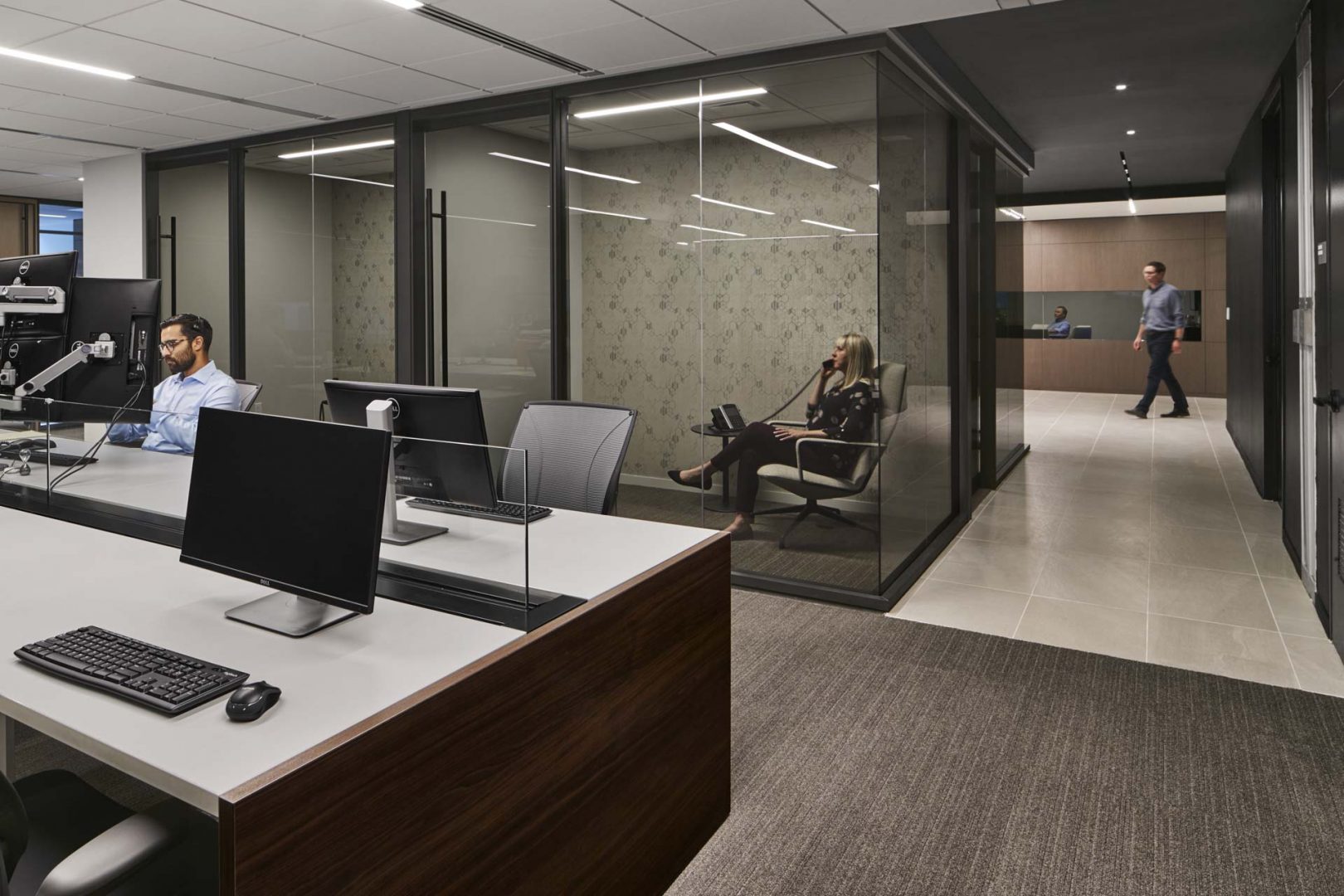
As conditions change, use of modular wall systems may increase.
From Tom Quarticelli:
Companies will still need to meet and collaborate—that won’t go away—but how we do it will continue to evolve. For instance, the idea of conference rooms consisting of large tables may morph into using large rooms with groups of multiple smaller tables (spaced well apart) for 2-3 people. These rooms will incorporate multiple monitors for different viewing vantage points, allowing each person to engage with a presentation along with advanced technology options for interacting and connecting with a presentation and/or presenter.
Flexibility in the workplace will remain increasingly important since, as we have discovered with the current health crisis, conditions change day by day and it’s impossible to predict the future. The use of free-standing phone rooms that are moveable and able to be reconfigured will increase in popularity for private heads-down work or personal conversations. Use of DIRTT wall systems and other modular wall systems may increase due to their mobility, flexibility and ability to incorporate cleanable wall surfaces and varied connectivity options.
The common thread
In the responses from my colleagues as well as my own, I noticed that they all frame this tragic and unfortunate situation as an opportunity to move the built environment forward. That may take the form of accelerating building projects in the short term on campuses while the students are away. It may mean knocking down dying malls to build desirable mixed-use developments. We may find a new space somewhere between the conference room and the video chat. And hopefully we will implement technology that will keep our seniors healthier and safer every day, not just during a time of social distancing. Whatever lies ahead, it’s this type of thinking that will help us bounce back faster and let what feels right now like loss be a chance for a reset and a leap ahead.

